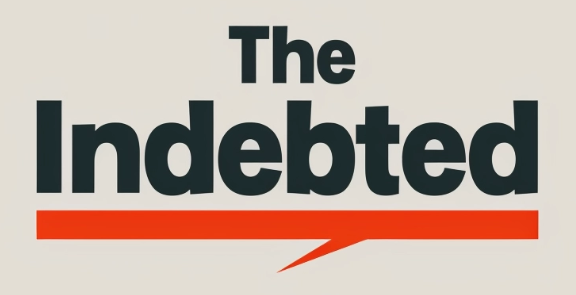If you’re struggling with credit card debt, you’re not alone. According to a recent survey, the average American carries a balance of over $5,000 on their credit cards. One way to tackle this debt is by using a balance transfer credit card.
A balance transfer credit card allows you to transfer your high-interest credit card debt to a new card with a lower interest rate, which can save you money on interest charges and help you pay off your debt faster. However, it’s important to use balance transfer credit cards wisely to avoid making your debt situation worse. In this article, I’ll share the best way to use balance transfer credit cards in debt repayment, so you can get out of debt faster and more efficiently.
First, it’s important to understand the terms and conditions of the balance transfer credit card you’re considering. Look for a card with a low or 0% introductory APR period, and make sure you understand how long that period lasts. Some cards offer a 0% APR for up to 18 months, while others may only offer it for six months. It’s also important to understand what the APR will be after the introductory period ends, so you can plan accordingly. By doing your research and choosing the right card, you can save money on interest charges and pay off your debt faster.
Understanding Balance Transfer Credit Cards
As someone who has used balance transfer credit cards to pay off debt, I can say that they can be a powerful tool in your debt repayment strategy. However, before you start using balance transfer credit cards, it is important to understand how they work and what to look for.
What Is a Balance Transfer?
A balance transfer is when you move debt from one credit card to another. The new credit card pays off the old credit card, and you are left with a new balance on the new credit card. Balance transfers are often used to consolidate debt, as it can be easier to manage one payment instead of multiple payments.
Benefits of 0% Intro APR
One of the main benefits of balance transfer credit cards is the 0% intro APR (Annual Percentage Rate). This means that for a certain period of time, usually 12-18 months, you will not be charged any interest on your balance. This can save you a significant amount of money in interest charges.
Comparing Balance Transfer Fees and Rates
It is important to compare balance transfer fees and rates when choosing a balance transfer credit card. Balance transfer fees are typically 3-5% of the amount transferred, so you want to make sure that the savings from the 0% intro APR outweigh the balance transfer fee. Additionally, you want to pay attention to the interest rate after the intro period ends. Some cards have a variable APR, which means the rate can change over time. It is important to understand the terms of the card and how they will affect your debt repayment strategy.
Eligibility and Application Process
When considering a balance transfer credit card, it is important to understand the eligibility requirements and application process. In this section, I will cover the credit requirements for approval and how to apply for a balance transfer card.
Credit Requirements for Approval
To be eligible for a balance transfer credit card, you typically need to have good to excellent credit. This means a credit score of 670 or higher. However, some cards may require a higher credit score, so it is important to check the specific requirements for each card.
In addition to your credit score, credit card issuers will also consider other factors such as your income, debt-to-income ratio, and credit history. They may also consider whether you have any recent delinquencies or bankruptcies on your credit report.
How to Apply for a Balance Transfer Card
The application process for a balance transfer credit card is similar to applying for any other credit card. You will need to provide personal information such as your name, address, and social security number. You will also need to provide information about your income and employment.
When applying for a balance transfer card, it is important to pay attention to the balance transfer fee and the introductory APR period. Some cards may offer a 0% introductory APR for a certain period of time, while others may offer a lower introductory rate for a longer period of time. It is also important to consider the balance transfer fee, which is typically a percentage of the amount transferred.
Once you have applied for a balance transfer card and been approved, you will need to contact the credit card issuer to initiate the balance transfer. This typically involves providing the account information for the credit card you want to transfer the balance from.
Formulating a Debt Repayment Strategy
As I began my journey towards financial freedom, I realized that formulating a debt repayment strategy was crucial. It is important to create a plan that is realistic and achievable. In this section, I will discuss how to create a repayment plan, calculate monthly payments, and avoid new debt.
Creating a Repayment Plan
The first step in creating a repayment plan is to gather all of your debt information. This includes the creditor, balance, interest rate, and minimum monthly payment. Once you have this information, you can begin to prioritize your debts.
One popular strategy is the debt avalanche method. This involves paying off the debt with the highest interest rate first, and then moving on to the next highest interest rate. Another strategy is the debt snowball method, which involves paying off the smallest debt first and then moving on to the next smallest debt.
Calculating Monthly Payments
Once you have prioritized your debts, it is important to calculate your monthly payments. You can use a debt repayment calculator to determine how much you need to pay each month to become debt-free in a certain amount of time.
It is important to remember that paying more than the minimum monthly payment can save you money in the long run. By paying more than the minimum, you will pay off your debt faster and reduce the amount of interest charges you will pay.
Avoiding New Debt
While you are working on paying off your debt, it is important to avoid new debt. This means avoiding purchases that you cannot afford and using credit cards responsibly.
One way to avoid new debt is to create a budget and stick to it. This will help you track your spending and ensure that you are not overspending.
Another way to avoid new debt is to use a balance transfer credit card. These cards allow you to transfer your high-interest debt to a card with a lower interest rate. This can help you save money on interest charges and pay off your debt faster. However, it is important to read the terms and conditions carefully and avoid using the card for new purchases.
Maximizing Benefits and Avoiding Pitfalls
As I mentioned earlier, balance transfer credit cards can be a powerful tool for debt repayment. However, to get the most out of them, you need to be aware of some key considerations.
Leveraging the Introductory Period
One of the primary benefits of balance transfer credit cards is the introductory period, during which you can enjoy 0% APR on your transferred balance. This can be a huge boon for paying down debt, as it allows you to put more of your money towards the principal balance rather than interest charges.
To make the most of this period, it’s important to have a solid repayment plan in place. Calculate how much you need to pay each month to pay off your balance before the introductory period ends, and make sure you stick to that plan. Consider setting up automatic payments to ensure you don’t miss a payment.
Understanding the Impact on Credit Score
While balance transfer credit cards can be a helpful tool for debt repayment, they can also have an impact on your credit score. When you apply for a new credit card, your credit score may take a temporary hit due to the hard inquiry on your credit report.
Additionally, if you close an old credit card account after transferring the balance, it can negatively impact your credit utilization ratio, which is an important factor in your credit score. To minimize the impact on your credit score, consider keeping your old credit card account open and using it responsibly.
Handling Balance Transfer Limits
Another key consideration when using balance transfer credit cards is the balance transfer limit. This is the maximum amount of debt you can transfer to the new card.
While some cards may offer a high balance transfer limit, others may have a lower limit. Be sure to check the terms and conditions of the card before applying to ensure that the balance transfer limit is sufficient for your needs.
It’s also important to note that exceeding the balance transfer limit can result in penalty APR and fees, which can negate the benefits of the balance transfer. Be sure to stay within the limit to avoid these pitfalls.
Additional Financial Tools and Resources
Using Budgeting Apps and Calculators
In addition to utilizing balance transfer credit cards, there are other financial tools and resources that can help you manage your debt repayment plan. One such tool is a budgeting app or calculator.
These apps can help you keep track of your monthly income and expenses, allowing you to create a budget that works for you. Some popular budgeting apps include Mint, YNAB, and PocketGuard. These apps can help you track your spending, set financial goals, and even provide personalized advice on how to improve your finances.
Exploring Alternative Debt Repayment Options
While balance transfer credit cards can be an effective way to manage your debt, they may not be the best option for everyone. If you have a high amount of debt or are struggling to make your monthly payments, you may want to consider exploring alternative debt repayment options.
One such option is a personal loan. Personal loans can be used to consolidate your debt into one monthly payment, potentially lowering your interest rate and making it easier to manage your finances.
Another option is to seek the help of a credit counseling service. These services can help you create a debt repayment plan and negotiate with your creditors to lower your interest rates and fees. They can also provide financial education and support to help you get back on track.





